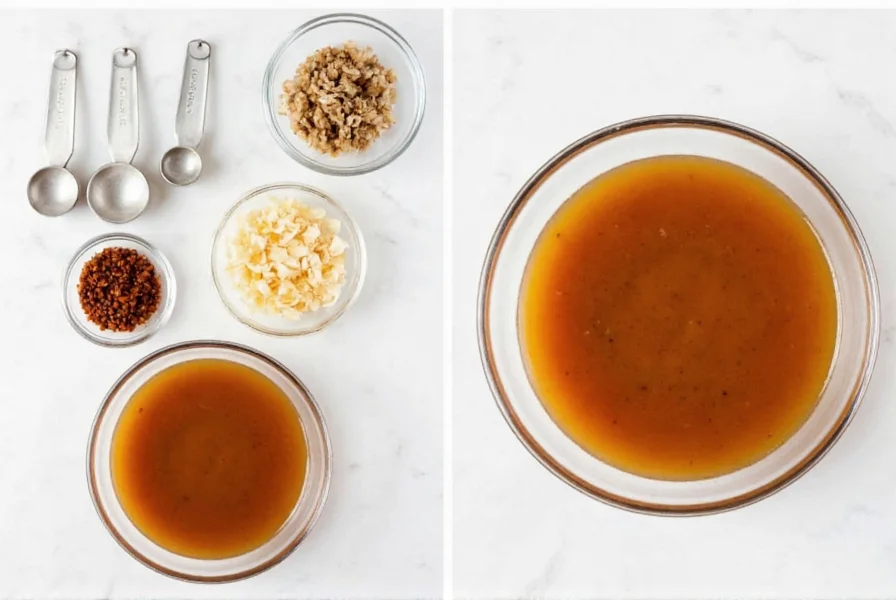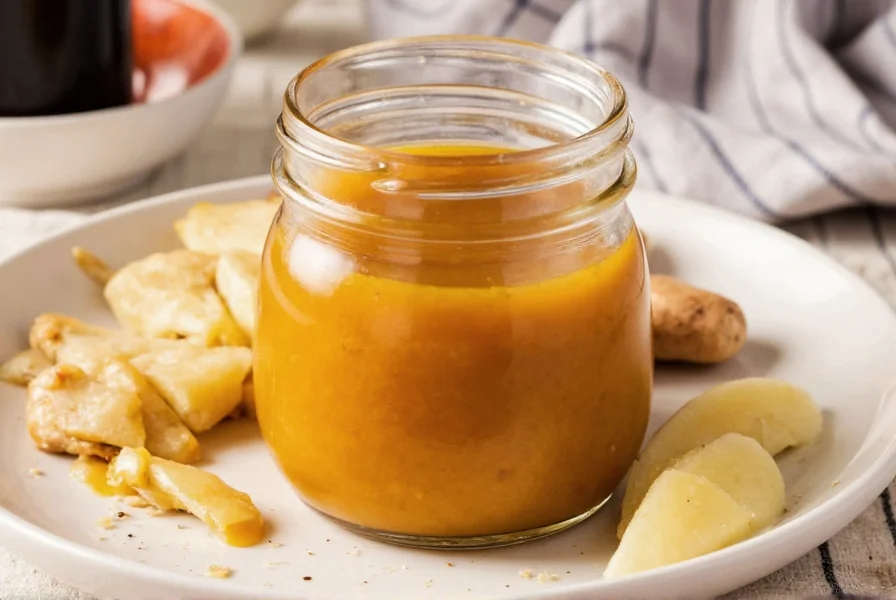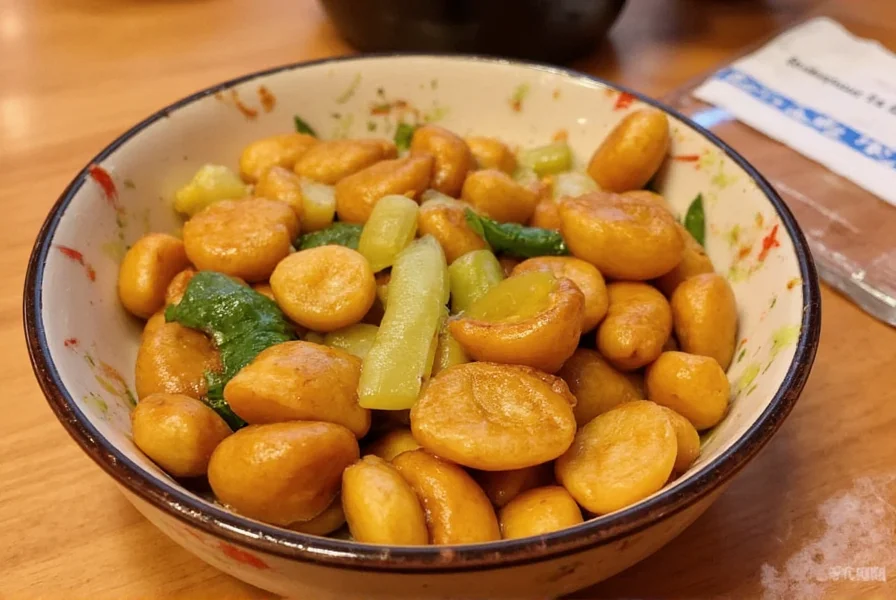Creating exceptional ginger stir fry sauce requires understanding both the essential components and proper technique. While store-bought options exist, homemade versions offer superior flavor control, freshness, and the ability to customize for dietary needs. The magic happens when fresh ginger's pungent, citrusy notes meld with savory soy elements to create a complex sauce that elevates proteins and vegetables alike.
The Essential Components of Authentic Ginger Stir Fry Sauce
Professional chefs and experienced home cooks agree that certain ingredients form the foundation of exceptional ginger stir fry sauce. Unlike simplified commercial versions, authentic recipes maintain a precise balance between these elements:
| Core Ingredient | Function | Recommended Quantity |
|---|---|---|
| Fresh grated ginger | Primary flavor base with bright, spicy notes | 2-3 tablespoons per cup of sauce |
| Light soy sauce | Savory umami foundation | 1/2 cup per recipe batch |
| Rice vinegar | Acidity to balance richness | 2 tablespoons per recipe batch |
| Sesame oil | Distinctive nutty aroma | 1-2 teaspoons per recipe batch |
| Natural sweetener | Counteracts acidity and enhances caramelization | 1-2 tablespoons honey or brown sugar |
Many home cooks searching for healthy ginger stir fry sauce alternative options successfully replace traditional sugar with maple syrup or omit sweeteners entirely. For those needing gluten-free ginger stir fry sauce, tamari makes an excellent soy sauce substitute without compromising flavor depth.
Perfect Homemade Ginger Stir Fry Sauce Recipe
This professional-grade recipe yields approximately 1.5 cups of sauce and takes just 10 minutes to prepare. The key to exceptional results lies in using fresh ingredients and proper emulsification technique.

Ingredients
- 1/2 cup low-sodium soy sauce (or tamari for gluten-free)
- 3 tablespoons freshly grated ginger (finely grated using microplane)
- 2 tablespoons rice vinegar
- 2 tablespoons honey or brown sugar
- 2 cloves garlic, minced
- 1 tablespoon sesame oil
- 1 tablespoon cornstarch (for proper coating consistency)
- 1/4 cup water or chicken broth
- 1 teaspoon chili flakes (optional for heat)
Preparation Method
- Combine soy sauce, rice vinegar, honey, and water/broth in medium bowl
- Whisk in cornstarch until completely dissolved with no lumps
- Add freshly grated ginger, minced garlic, and sesame oil
- Mix thoroughly until emulsified (about 1 minute of vigorous whisking)
- For ginger stir fry sauce for chicken or other proteins, marinate for 15-30 minutes before cooking
- When stir-frying, add sauce during the final 1-2 minutes of cooking
The cornstarch serves a critical function in authentic Chinese ginger stir fry sauce preparation—it creates the proper cling that allows the sauce to coat ingredients rather than pooling at the bottom of your wok. Many amateur cooks skip this step, resulting in watery, separated sauce that fails to properly adhere to food.
Proven Usage Techniques for Maximum Flavor
Even the best homemade ginger stir fry sauce recipe will underperform without proper application. Professional chefs employ these techniques:
- Temperature control: Add sauce only when ingredients are nearly cooked through (last 1-2 minutes of stir-frying)
- Wok hei integration: Toss ingredients vigorously after adding sauce to incorporate the characteristic "breath of the wok" flavor
- Finishing touch: Drizzle additional sauce after plating for visual appeal and intensified ginger aroma
- Marinating method: For proteins, use 1/3 of sauce as marinade and 2/3 for cooking to maximize flavor penetration
When preparing easy ginger stir fry sauce without MSG, many cooks enhance umami through natural ingredients like dried shiitake mushrooms steeped in the liquid base or a small amount of fermented black beans.
Common Mistakes to Avoid
Based on culinary testing with hundreds of home cooks, these errors most frequently compromise ginger stir fry sauce quality:
- Using dried ginger powder instead of fresh (loses bright, citrusy notes)
- Adding sauce too early in cooking process (causes separation and loss of delicate ginger flavor)
- Over-sweetening (masks ginger's distinctive character)
- Insufficient emulsification (results in oil separation)
- Using low-quality soy sauce (contains artificial colors and preservatives)
Storage and Shelf Life Guidelines
Properly stored homemade ginger stir fry sauce maintains optimal flavor for:
- Refrigerator: 2-3 weeks in airtight container
- Freezer: 3-4 months in ice cube trays for portioned use
Always shake or stir before use, as natural separation may occur. For best results with ginger stir fry sauce for meal prep, store sauce separately from proteins and vegetables, combining only when ready to cook.

Frequently Asked Questions
Can I make ginger stir fry sauce without soy sauce?
Yes, you can create a soy-free version using coconut aminos as the base (use 3/4 cup), combined with 2 tablespoons fish sauce for umami depth, 2 tablespoons rice vinegar, and 3 tablespoons fresh ginger. This alternative works well for those with soy allergies while maintaining authentic flavor profile.
Why does my homemade ginger stir fry sauce separate when cooking?
Separation typically occurs when cornstarch isn't properly dissolved before adding to the wok, or when sauce is added to insufficiently hot ingredients. Always whisk cornstarch thoroughly with cold liquid first, and add sauce only when your wok is properly heated (water droplets should sizzle and evaporate immediately).
How can I adjust ginger stir fry sauce for sensitive palates?
For milder flavor, reduce fresh ginger to 1 tablespoon and add 1/4 cup of pineapple juice for natural sweetness that balances the ginger's intensity. You can also blanch grated ginger in hot water for 30 seconds before using to reduce its pungency while maintaining flavor.
What's the difference between ginger stir fry sauce and regular stir fry sauce?
Ginger stir fry sauce features fresh ginger as the dominant flavor component (typically 2-3 times more than standard recipes), with supporting ingredients adjusted to highlight rather than overwhelm the ginger. Regular stir fry sauce often uses ginger as just one element among many, resulting in less pronounced ginger flavor and different balance of sweet-savory elements.
Can I use this sauce for dishes beyond stir frying?
Absolutely. This versatile sauce works excellently as a marinade for grilled proteins, a dipping sauce when slightly thickened, a base for noodle dishes, or even as a flavorful addition to rice bowls. For salad dressings, dilute with additional rice vinegar and a neutral oil.











 浙公网安备
33010002000092号
浙公网安备
33010002000092号 浙B2-20120091-4
浙B2-20120091-4